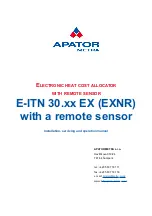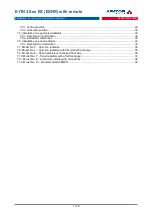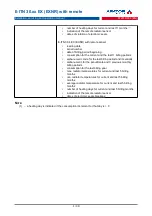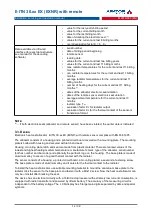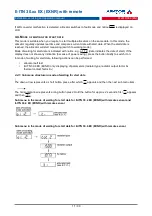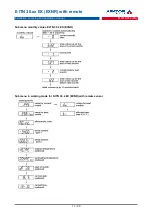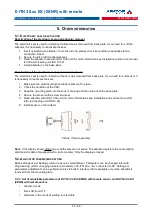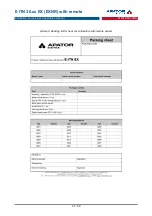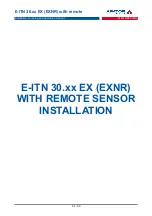
E-ITN 30.xx EX (EXNR) with remote
Installation, servicing and operatiion manual
M2016/08b [EN]
•
value for the last yearly billing period
•
value for the current billing month
•
value for the last billing month
•
date of violating the electronic seal
(2)
•
values for the current and last 8 billing months
•
overall evaluation factor K = K
c
. K
q
Data available via infra-red
interface (for exact data structure
see manual for the decoding
software)
•
serial number
•
date of billing period beginning
•
remote sensor
•
reading date
•
values for the current and last two billing years
•
values for the current and last 11 billing months
•
max. radiator temperatures for the current and last 11 billing
months
•
min. radiator temperatures for the current and last 11 billing
months
•
average radiator temperatures for the current and last 11
billing months
•
number of heating days for the current and last 11 billing
months
(1)
•
dates of the allocator electronic seal violation
•
dates of the remote sensor electronic seal violation
•
average ambient temperature for the current and last 3
months
•
radiator type T
OT
•
evaluation factor Kq for radiator output
•
evaluation factor Kc for the thermal contact of the sensors
•
transmision format
N
OTE
:
(2)
... if both electronic seals (allocator and remote sensor) have been violated, the earlier date is indicated
3.3. D
ESIGN
Electronic heat cost allocator E-ITN 30.xx EX (EXNR) with remote sensor complies with EN 834:1995.
The allocator consists of a housing and a printed circuit board covered with a mounting plate. The mounting
plate is bolted with housing and secured with latch and seal.
Housing, mounting plate, latch and seal are made from plastic material. There are marked values of the
lowest and highest heating medium temperature, manufacturer's mark, type of the allocator, serial number
(both as number and bar code) and optionally the partner's logo on the housing. The base plate is made of
aluminium alloy to ensure of a good thermal contact with the radiator.
The sensor consists of a housing, a printed circuit board, a mounting plated, a seal and a fastening screw.
The base plate is made of aluminium alloy and it cares for the thermal contact to the radiator.
To install the heat cost allocator, use suitable mounting material to mount the alluminium base plate to the
radiator click the sensor to the base plate and fasten it with a M3x12 screw. Now the heat cost allocator can
only be uninstall after breaking the seal.
The device has an electrical circuitry with a 16-Bit microprocessor with extremely low current consumption, is
equipped with radio transmitter and powered by lithium battery. The accuracy of the measuring circuit is
independent of the battery voltage. The LCD-display has 5 large main digits separated by dots and special
symbols.
12 / 39

